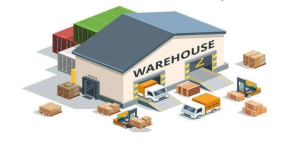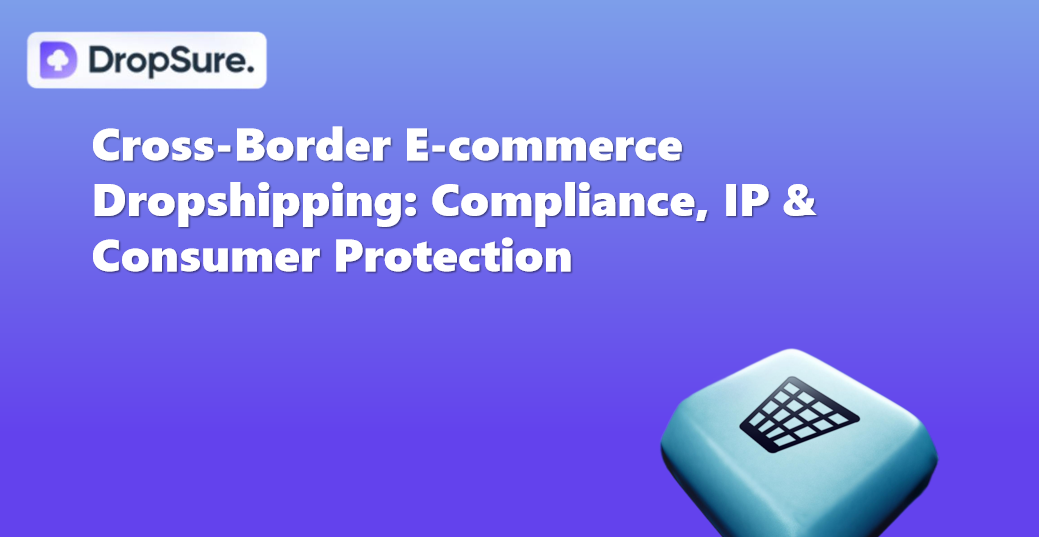
In the past, overseas warehouses weren’t a major focus in cross-border e-commerce. However, with changes in the global trade environment and rising tariffs, their importance has grown significantly. For sellers targeting markets like the U.S. and Europe, having their own overseas warehouse or using third-party storage directly impacts operational efficiency, cost control, and brand competitiveness. Today, overseas warehouses are crucial to standing out in a competitive market.
How can cross-border e-commerce sellers use overseas warehouses to improve efficiency and competitiveness? Let’s explore the 5 ways overseas warehouses help you beat the tariff trap.
Benefit 1: Improving Efficiency
With tariffs increasing, many cross-border sellers are starting to stock up in advance, sending hot-selling products to overseas local warehouses. This approach cuts international shipping times, which can otherwise take 10 to 20 days, down to just 1 to 5 days for delivery. It also bypasses customs clearance issues, provides opportunities for tax refunds, and ultimately saves both time and money.
For example, goods shipped from China to border warehouses in Vietnam can be delivered to Hanoi within 1-2 days. In Europe, countries with strategic locations, like the Czech Republic and Poland, have become key “transit hubs” for Amazon Europe warehouses. When the main warehouse in Germany runs out of stock, these places can quickly “replenish” the inventory, ensuring a high delivery efficiency.
According to the “2024 Overseas Warehouse Blue Book,” more than half of third-party warehousing service providers can complete the full process of “picking, weighing, labeling, and shipping” within 60 minutes. In today’s competitive cross-border e-commerce environment, speed and turnover are key factors that determine success.
Suggestions for Cross-border Sellers:
Don’t just focus on US FBA or major UK warehouses. These locations are highly competitive, expensive, and come with many restrictions. Consider expanding into “secondary markets” or “nearby warehouses” in Southeast Asia, Eastern Europe, or Mexico. While the market size may not be as large, the shorter transportation routes make logistics more flexible. For example, combinations like a Mexico warehouse + last-mile delivery in the Western US or a Poland warehouse + Germany’s main warehouse have been proven to be effective.
When choosing an overseas warehouse partner, don’t just focus on price. It’s more important to consider whether they have “smart capabilities,” such as system integration, real-time tracking, and the ability to send immediate alerts in case of missing goods or order issues. It’s no longer about having the biggest warehouse, but rather the fastest response.
Don’t get too greedy with SKU management. Not all products are suitable for overseas storage. Before sending large amounts, research the best-selling data of local platforms and target audiences. Start with small batches to test the waters and quickly reorder successful products before scaling up. Otherwise, if you overstock and the products don’t sell, you may face challenges with returns and excess inventory.
If possible, use a “multi-warehouse + multi-channel” strategy for backup. For example, keep high-traffic SKUs in local warehouses and send another batch via international express or registered mail for redundancy. This way, if the overseas warehouse gets overwhelmed or there are order delays, the main channel is backed up with a Plan B, preventing a complete breakdown in your logistics.
Benefit 2: Reducing Cost
In an era of rising tariffs, many sellers have been forced to build in a 20%-30% “tariff buffer” into their pricing just to stay afloat. With profits being squeezed so tightly, the first thing a seller needs to focus on is cost-cutting, and overseas warehouses are a key strategy for doing just that.
First, major savings on shipping costs.
Overseas warehouses adopt a “centralized shipping” model, where goods are packed and shipped in bulk via sea freight or rail (e.g., China-Europe rail), significantly lowering the cost compared to individual direct shipments. This is especially useful for large, heavy items such as fitness equipment, pet supplies, and outdoor furniture. If you’re still using air freight for direct shipping, you’re probably burning money. Using overseas warehouses can reduce overall shipping costs by 20% to 30%, and it also reduces the chances of your shipments being randomly inspected or delayed at customs.
Second, local delivery is much more affordable.
Once the goods arrive at the overseas warehouse, local couriers handle the delivery, which is both cheaper and faster, improving the customer experience. Plus, returns can be sent directly to the local warehouse, eliminating the headache of handling “international returns.” This saves not only on return shipping fees but also on time and labor. For example, returning products from the US to China can sometimes cost up to 50% of the product’s sale price, destroying your profit margin. But with a local warehouse, returned goods can be repacked and resold, turning waste into profit.
Third, favorable tax structures can also lead to tax savings.
In the EU, B2B (business-to-business) replenishment and B2C (business-to-consumer) fulfillment have different tax systems. B2B customs clearance often allows for tax deferral and may even offer tax rate discounts in some regions. On the other hand, B2C direct shipping means immediate tax payments, which are often complicated with lower thresholds. By using an overseas warehouse, you essentially create a “buffer zone” in terms of taxes, which can benefit your bottom line.
Practical advice for sellers:
Prioritize placing large, low-margin, and high-return-rate products in overseas warehouses. Products that are often returned are difficult to manage through direct shipping, but with an overseas warehouse, returned goods can be resold as second-hand items, avoiding total loss.
Plan the replenishment frequency for overseas warehouses carefully. More stock doesn’t always mean better. You need to adjust dynamically according to estimated sales, SKU performance, and seasonal peaks. Particularly before the off-season, consider clearing out excess stock to avoid high warehousing costs eating into your profit.
Be aware that overseas warehouses aren’t a “get out of jail free card” for taxes. Different countries have different rules. Be sure to work with a reliable customs broker or consultant to understand the processes and avoid potential pitfalls. For example, after Brexit, the VAT policy in the UK and OSS declarations in Germany can lead to unexpected tax issues if not handled properly.
Benefit 3: Boosting Marketing Effectiveness
In traditional direct shipping models, large, heavy, and fragile products are often marketing “dead zones.” No matter how well you write copy, create videos, or spend on ads, when customers see the high shipping costs and delivery times, they walk away, and platforms aren’t eager to give you traffic either.
However, once you start using overseas warehouses, the situation completely changes.
First, product labels change, and platform algorithms reward you.
On platforms like Amazon and Walmart, shipping speed is a critical part of the Buy Box algorithm, especially for Amazon, where fast delivery often equals high sales. By using overseas warehouses, your products can be tagged with “local shipping” and “1-3 days delivery,” which boosts your ranking on the platform and increases your chances of entering the Prime pool. This isn’t some mystical theory; it’s the actual mechanics of the platform. Delivery speed has a weight of over 20% in the algorithm, so if you’re fast, the platform will push you higher in search rankings.
Second, previously unsellable “niche SKUs” can now thrive.
Products like dumbbells, office chairs, floor lamps, and glassware sets may have been dead ends for direct shipping from China, but once placed in local warehouses, they become “high-value local options.” These products can now be advertised, bundled, and even included in external deals. This is because logistical limitations are removed, and what was once a dead product turns into a potential bestseller.
Third, choosing the right type of warehouse ensures accurate marketing strategies.
There are three main types of overseas warehouses:
Platform warehouses (e.g., Amazon FBA): These offer high weight and large traffic, making them suitable for volume-based sales. The downside is the strict rules and high storage fees.
Third-party warehouses (e.g., ShipBob, DEALCASE): These offer high flexibility and controllable costs, ideal for selling on multiple platforms.
Self-built or cooperative warehouses: These are suitable for sellers with established brands, strong supply chains, and financial resources. The advantage is strong control and the ability to customize operations, such as dropshipping and local customer service interaction.
Depending on the seller’s stage and approach, different warehouse types may be more suitable:
Sellers focusing on viral products should first use FBA to capture traffic.
Sellers operating on multiple platforms benefit from third-party warehouses for higher efficiency.
Brand-focused sellers may prefer semi-self-built warehouses to engage private customers and improve customer service in the long run.
Practical suggestions for sellers:
When selecting SKUs, consider their potential to be “saved” by logistics.
Some SKUs may not be unsellable—they’re just stuck due to poor logistics. Review old products in your warehouse with high clicks but low conversions, and test them with overseas warehouses. Many times, they can be revived. Pair external advertising with local warehouse shipping for better results.
Platforms like Facebook, TikTok, and Pinterest are most worried about “users seeing → clicking → then finding out they have to wait three weeks.” With a local warehouse, you can create a “next-day delivery” loop for your ads, dramatically improving your ROI. Offer bundle deals to increase the average order value.




 15 min read
15 min read



